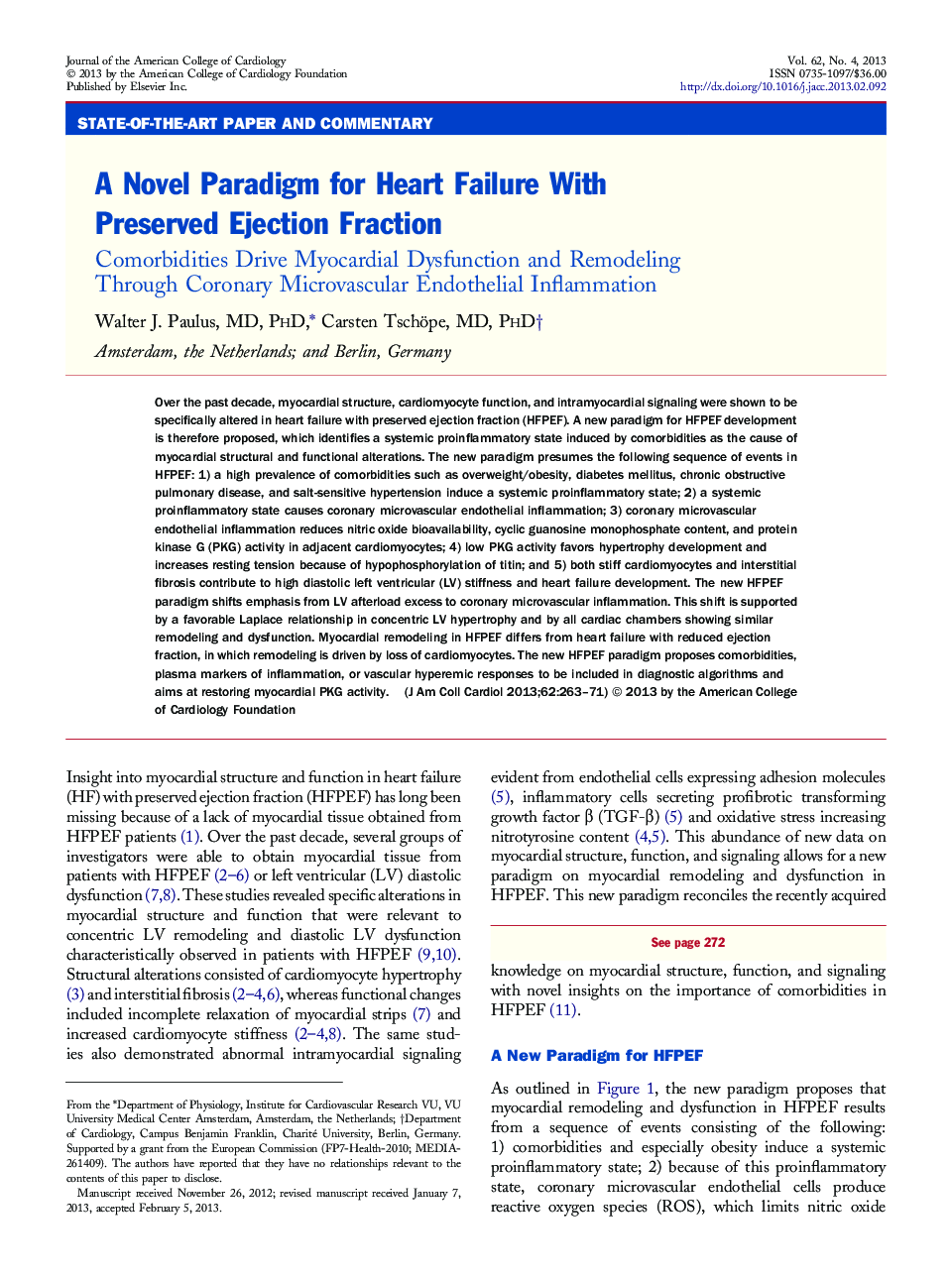| Article ID | Journal | Published Year | Pages | File Type |
|---|---|---|---|---|
| 2945658 | Journal of the American College of Cardiology | 2013 | 9 Pages |
Over the past decade, myocardial structure, cardiomyocyte function, and intramyocardial signaling were shown to be specifically altered in heart failure with preserved ejection fraction (HFPEF). A new paradigm for HFPEF development is therefore proposed, which identifies a systemic proinflammatory state induced by comorbidities as the cause of myocardial structural and functional alterations. The new paradigm presumes the following sequence of events in HFPEF: 1) a high prevalence of comorbidities such as overweight/obesity, diabetes mellitus, chronic obstructive pulmonary disease, and salt-sensitive hypertension induce a systemic proinflammatory state; 2) a systemic proinflammatory state causes coronary microvascular endothelial inflammation; 3) coronary microvascular endothelial inflammation reduces nitric oxide bioavailability, cyclic guanosine monophosphate content, and protein kinase G (PKG) activity in adjacent cardiomyocytes; 4) low PKG activity favors hypertrophy development and increases resting tension because of hypophosphorylation of titin; and 5) both stiff cardiomyocytes and interstitial fibrosis contribute to high diastolic left ventricular (LV) stiffness and heart failure development. The new HFPEF paradigm shifts emphasis from LV afterload excess to coronary microvascular inflammation. This shift is supported by a favorable Laplace relationship in concentric LV hypertrophy and by all cardiac chambers showing similar remodeling and dysfunction. Myocardial remodeling in HFPEF differs from heart failure with reduced ejection fraction, in which remodeling is driven by loss of cardiomyocytes. The new HFPEF paradigm proposes comorbidities, plasma markers of inflammation, or vascular hyperemic responses to be included in diagnostic algorithms and aims at restoring myocardial PKG activity.
